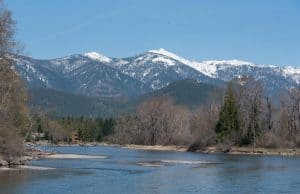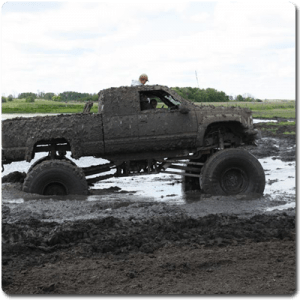 The differences between Montana and adjacent states are always interesting to note. Jon reminded me of that with his post about the WSA poll here. In Wyoming, the next state to the south, the state initiated what is known as the Wyoming Public Lands Initiative.
The differences between Montana and adjacent states are always interesting to note. Jon reminded me of that with his post about the WSA poll here. In Wyoming, the next state to the south, the state initiated what is known as the Wyoming Public Lands Initiative.
Here’s a link:
A voluntary, collaborative, county-led process intended to result in one, multi-county legislative lands package that is broadly supported by public lands stakeholders in Wyoming. The ultimate goal is a new federal law that governs the designation and management of Wyoming’s Wilderness Study Areas (WSAs); and, where possible, addresses and pursues other public land management issues and opportunities affecting Wyoming’s landscape.
I first heard of this by reading articles in the Wyoming Livestock Roundup on the Sublette County Advisory Committee. What struck me about the discussions was the scale of knowledge that the participants had, and the knowledge of the country and specifics of concerns. What also struck me was how little was about timber management and oil and gas, and how much was about different forms of recreation. Really, a lot less controversy in terms of management and more in terms of words (wilderness or not?).
Somehow it look as if someone’s marketing has a dual switch Wilderness or Destruction.
Here’s an example…
Smitherman said we are close on Lake Mountain, but we need to look at the West Lake Management area, the language of forest management practice. The biggest issues are in Shoal and Scab. We started with 42 thousand acres well protected. Conservation gets five percent of that. He said he can’t sell it, and he represents 15 groups.
Smutko (he is one of the facilitators, from the Ruckleshaus Institute at UWyo.) asked if Smitherman could offer a suggestion, concrete proposal.
Smitherman responded Scab as wilderness, and an addition in Shoal. Landers said this is where we butt heads, that neither of them can sell it. Lanning said
initially he had no problem with Scab for wilderness, but the committee ought to be looking more objectively at strong management rather than the title. With the o
objectives under the NCA you get all the protections you get under wilderness, but it allows for trail to be maintained easier.
On the north end, where there is cheatgrass, it can be sprayed by aerial means. That aerial treatment is not ongoing, it is only needed until vegetation can out compete cheat grass . Once achieved spraying is no longer necessary.
It’s from the April 12 2018 Sublette meeting summary, but you could look at probably any of the meeting notes from any of the groups, and see the same degree of specificity. Here’s another one:
Recommendations from the Fortification Creek Study Group.
Due to Public Comment and additional discussion by Committee Members, the following recommendation was agreed on.
Hard Release from Wilderness Designation (meaning the area could not be reconsidered for Wilderness designation again), with a permanent designation entitled “Fortification Creek Management Area”. The management intentions for this area follow:
1. Inclusion of a Map of the present Fortification Creek Wilderness Study Area showing the exterior boundary.
2. Management area represents only federal lands within this boundary.
3. No new surface disturbance unless needed for fire suppression.
4. No new permanent roads.
5. Maintain existing characteristics.
6. Existing uses continued such as grazing, hunting, and recreation.
7. No motorized or mechanized vehicles allowed other than reasonable fire suppression, weed and pest control, wildlife and stock water, or emergency needs.
It sounds like some folks start with management restrictions and then find a designation (National Conservation Areas, National Recreation Areas, Management Areas) but others are attached to big W Wilderness. There are two ideas here (which restrictions) and (how permanent). Permanency can be addressed via other legislative land designations besides Wilderness.
Even the Wilderness Society does not say that success is the greatest number of acres in Wilderness. At least not in this presentation by Paul Spitler here where he describes a variety of legislative land deals involving wilderness and other transfers, designations and so on, including two in Montana as successful.



